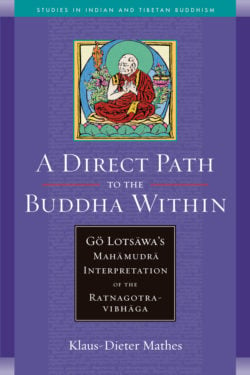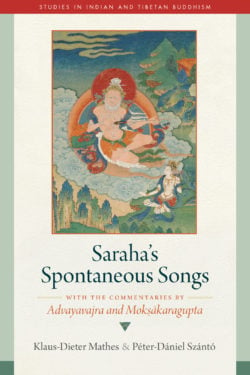Klaus-Dieter Mathes

Klaus-Dieter Mathes earned his doctorate at Marburg University and is a Professor of Buddhist Studies at the University of Hong Kong. He previously worked as a research fellow and lecturer at the Asia Africa Institute at the University of Hamburg, Germany, and as a Professor of Tibetology and Buddhist Studies at the University of Vienna, Austria. His research in progress deals with the Indian origins of Tibetan Mahāmudrā traditions. He is also a regular contributor to the Journal of the International Association of Tibetan Studies.
Books, Courses & Podcasts
A Direct Path to the Buddha Within
Maitreya’s Ratnagotravibhāga, also known as the Uttaratantra, is the main Indian treatise on buddha nature, a concept that is heavily debated in Tibetan Buddhist philosophy. In A Direct Path to the Buddha Within, Klaus-Dieter Mathes looks at a pivotal Tibetan commentary on this text by Gö Lotsāwa Zhönu Pal, best known as the author of the Blue Annals. Gö Lotsāwa, whose teachers spanned the spectrum of Tibetan schools, developed a highly nuanced understanding of buddha nature, tying it in with mainstream Mahāyāna thought while avoiding contested aspects of the so-called empty-of-other (zhentong) approach. In addition to translating key portions of Gö Lotsāwa’s commentary, Mathes provides an in-depth historical context, evaluating Gö’s position against those of other Kagyü, Nyingma, and Jonang masters and examining how Gö Lotsāwa’s view affects his understanding of the buddha qualities, the concept of emptiness, and the practice of mahāmudrā.
Learn more about the Studies in Indian and Tibetan Buddhism series.
Read Go Lotsawa’s biography at the Treasury of Lives.
Saraha’s Spontaneous Songs
“Completely abandon thought and no-thought, and abide in the natural way of a small child.” —Saraha
To find liberation and realize the true nature of reality, the Indian Buddhist master Saraha says we must leave behind any conceptual assessment of reality, since no model of it has ever been known to withstand critical analysis. Saraha’s spontaneous songs, or dohās, represent the Buddhist art of expressing the inexpressible. The most important collection of Saraha’s songs is the Dohākoṣa, the Treasury of Spontaneous Songs, better known in Tibet as the Songs for the People, and the Tibetan mahāmudrā tradition, especially within the Kagyü school, has done the most to preserve the lineage of Saraha’s instructions to the present day.
But Saraha was also widely cited in Indian sources starting around the eleventh century, and one Indic commentary, by the Newar scholar Advayavajra, still exists in Sanskrit. In addition, we have independent root texts of Saraha’s songs in the vernacular Apabhraṃśa in which they were recorded. These Indian texts, together with their Tibetan translations, are here presented in masterful new critical editions, along with the Tibetan translation of the commentary no longer extant in Sanskrit by Mokṣākaragupta. Finally, both commentaries are rendered in elegant English, and the authors offer a brisk but comprehensive introduction.
Saraha’s Spontaneous Songs provides the reader with everything needed for a serious study of one of the most important works in the Indian Buddhist canon.
Learn more about the Studies in Indian and Tibetan Buddhism series.


